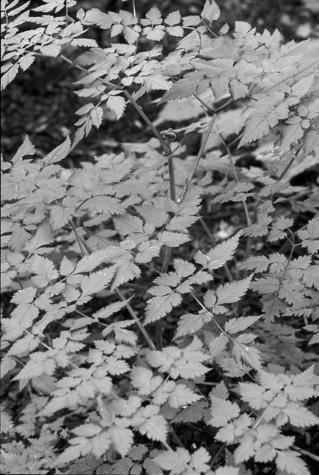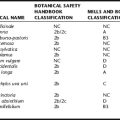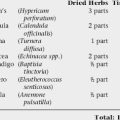DONG QUAI
Botanical name: Angelica sinensis
Part used: Root (whole root, root head, root body, root tail)
PRINCIPAL GYNECOLOGIC AND OBSTETRIC USES
CLINICAL INDICATIONS
both stimulating and relaxing activity on uterine tissue. Its reported efficacy in the treatment of dysmenorrhea and endometriosis most likely lies in its effects as an anti-inflammatory, antispasmodic, and analgesic. It is also thought to improve blood flow generally, specifically in the pelvis; thus it is used to relieve pelvic congestion syndrome and associated pelvic pain and uterine fibroids, which some herbalists consider associated with pelvic congestion and poor uterine circulation. Although it is sometimes touted as an herb for perimenopausal symptoms, alone it is traditionally considered a “heating” herb, which would actually exacerbate symptoms such as night sweats, hot flashes, irritability, and insomnia. However, in TCM these symptoms are also associated with yin and blood deficiency; thus in appropriately combined formulas, it can be used for the treatment of perimenopausal complaints.
IN VITRO, ANIMAL, AND CLINICAL DATA
Few studies have been done with dong quai as a single agent looking at its effects on gynecologic conditions for which it is traditionally indicated and for which modern herbal practitioners often use it. Further, many of the studies that have been done looking at dong quai are not in English language journals, limiting review of the literature and also raising questions about the standards used for clinical studies. Limited preclinical trials and human studies have shown efficacy in the treatment of dysmenorrhea and infertility resulting from tubal occlusion. Questions have arisen about whether dong quai has estrogenic effects. To date this has not been determined, with one clinical trial of 71 symptomatic perimenopausal women showing no significant changes in vaginal cell maturation or endometrial thickness after 24 weeks of a daily dose of 4.5 g of crude herb; however, a longer trial may be needed to demonstrate changes in vaginal and epithelial tissue. Numerous preclinical trials have demonstrated the herb’s dual ability to both relax and stimulate uterine smooth muscle. Dong quai has been shown to relax the vascular smooth muscle as well as uterine and intestinal smooth muscle, which may support its role in alleviating the symptoms of dysmenorrhea and endometriosis. Its stimulating effect is not usually corroborated with a clinical condition, but may explain its popularity as a uterine tonic for uterine atony and “boggy” uterus associated with uterine fibroids. Pharmacologic studies in animals suggest that dong quai may exert effects on the cardiovascular system, including increased myocardial perfusion, decreased myocardial oxygen consumption, increased blood flow, decreased afterload, inhibition of platelet aggregation, and inhibition of arrhythmias. Human clinical evidence suggesting hypotensive and cardiovascular protective effects of dong quai, however, is weak, with numerous methodologic flaws. Limited evidence suggests that the herb may have hemorrhologic effects, including decreased platelet aggregation and increased PT time.








